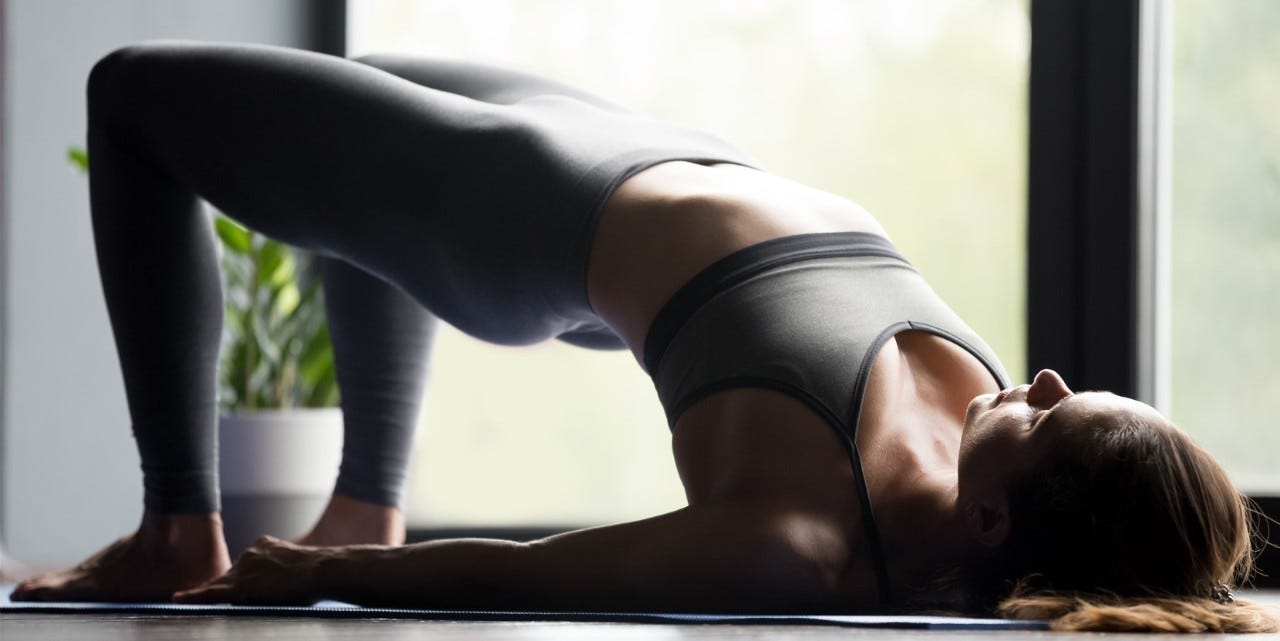Daily pelvic floor exercises
The pelvic floor undergoes considerable strain during pregnancy and childbirth. Simple exercises help to develop more awareness of this area of the body.

The pelvic floor normally works autonomously without us really noticing it. But during pregnancy at the latest, women become acquainted with the muscles, ligaments and connective tissue that close off the abdominal cavity downwards and provide the pelvic organs with a base. This is because the uterus, amniotic fluid and child exert additional pressure on the pelvic floor. It is also stretched a lot during a vaginal birth, especially if a suction cup or forceps are used or the baby is very big.
Weak pelvic floor: no more sneezing or bouncing?
A healthy and strong pelvic floor keeps the abdominal and pelvic organs in place, even with increased pressure in the abdominal cavity. In cooperation with the sphincter muscles, it also helps keep the bowel and bladder closed, and only relaxes on emptying. If the pelvic floor is too weak or damaged, it can lead to a prolapse or incontinence. This is why many mums lose a little urine when they laugh, sneeze or jump after the birth.
Of course, not all women are affected and there are also other reasons for pelvic floor dysfunction. Nevertheless, it’s a good idea to focus on these hidden muscles and start to use and train them before and after the birth. After all, they also play an important role in our sexuality.
Pelvic floor exercises after birth
Anyone who’s worried that it may involve strenuous exercises straight after giving birth can relax. Béatrice Lütolf, physiotherapist and pelvic floor expert, says: “Immediately after the birth, it’s initially about being aware of these muscles.” Women should feel how they can regain control of the muscles. They can do this, for example, by trying to hold in wind, explains Béatrice Lütolf.
Once women feel ready to exercise again, they can return to their normal sporting activities, but it’s important not to overdo it. When this time is and which activities make sense is very individual. It’s about listening to your body and accepting your limitations. Pelvic floor training is best integrated into daily life. For instance, when you have to pick something up, like your baby, focus on activating your pelvic floor and torso muscles so the pelvic floor tissue is not put under too much strain. For the same reason, sitting up sideways from a lying position is also recommended. You can also do short pelvic floor stretches throughout the day. Béatrice Lütolf’s tip: “Write yourself a note and stick it to a place where it’s convenient for you to do the exercise. Every time you go past the note, you’ll be reminded of the exercise and can do it two or three times.”
Four simple pelvic floor exercises to do every day
Béatrice Lütolf, physiotherapist with Medbase in Winterthur, specialising in pelvic floor rehabilitation.
-
Basic exercise: Breathe out and tense
The pelvic floor and diaphragm form the “floor” and “roof” of the abdomen. When you breathe in, the diaphragm exerts a slight pressure downwards. When you breathe out, the diaphragm arches upwards. Use this movement:
- - Take a deep breath in. When you breathe out, tense your pelvic floor.
- As you inhale, release the tension again. The pelvic floor returns to its basic tension.
- - Repeat this exercise a few times. Try it out in various seated positions. Over time, try to tense the pelvic floor more strongly and for longer.
-
All-fours: stabilising the core
- - Get onto all fours on a mat or soft surface.
- - Knees are under your hips, the top of your feet are flat on the floor, hands under the shoulders.
- - Make sure your back is in a neutral position, i.e. in neither cat or cow. Maintain this position throughout the exercise.
- - Now press the top of your feet and your hands into the mat as if you’re trying to make holes through it. Focus on which muscles are activated and what is happening under your knees. Hold this position for a few breaths and then release.
- - Repeat this exercise a few times.
-
Wall push-ups: full body tension and reaction
- Stand an arm's length away from a wall.
- - Stand tall with your abdomen tilted slightly towards your spine.
- - Holding yourself completely straight, fall towards the wall and only stop yourself with your hands at the last moment. The challenge: Try to keep your back straight.
- - Push yourself away from the wall and repeat this exercise a few times.
- Stand an arm's length away from a wall.
-
Take the pressure off your pelvic floor
Reduce the effect of gravity on the pelvic floor: Lay on your side as often as possible, for example when breastfeeding or reading You can also ease this pressure by going down on all fours and resting on your forearms. This way, your pelvis is higher than your shoulders which releases the pressure on your pelvic floor muscles. Stay in this position for as long as it feels good. You can also activate the pelvic floor muscles in this position (see exercise 1).


